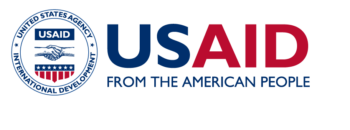Centro de información sobre la pandemia de COVID-19 (OMS)
La OMS tiene una Amplia colección de recursos related to the pandemic. In addition to Información para el público sobre las medidas de protección, Preguntas y respuestas, Consejos de viaje, y informes de situación diarios, there is a wealth of specific technical and research information for audiences from facility-level healthcare workers and managers to national-level policy makers.
- El Orientación técnica recopilación Incluye una herramienta de revisión de capacidades nacionales, materiales de comunicación de riesgos y participación comunitaria, orientación sobre vigilancia y definición de casos, y más.
- El Investigación global recopilación Incluye enlaces a artículos de noticias actuales y una base de datos de búsqueda de publicaciones de investigación.
Read more individual guidance documents, courses, and recommendations after the jump, or go directly to the WHO COVID-19 Pandemic Hub.
- Infection prevention and control: Primera edición de la OMS de las orientaciones sobre estrategias de prevención y control de infecciones (PCI) para su uso cuando se sospecha una infección por COVID-19. Se han adaptado de las orientaciones anteriores de la OMS sobre PCI para el MERS-CoV y el SARS-CoV. Estas orientaciones están destinadas a los trabajadores y administradores de atención sanitaria a nivel de establecimientos, pero también son pertinentes para los niveles nacional y de distrito/provincial.
- Vigilancia mundial de la infección humana por la enfermedad por coronavirus (COVID-2019):Orientación de la OMS a los Estados Miembros sobre cómo implementar la vigilancia de la COVID-19, monitorear las tendencias de transmisión, detectar rápidamente nuevos casos y proporcionar información epidemiológica para (1) realizar evaluaciones de riesgos a nivel nacional, regional y mundial y (2) orientar las medidas de respuesta.
- Paquete de productos básicos para combatir enfermedades: nuevo coronavirus (nC0V):Esta publicación esIncluye una lista esencial de equipos biomédicos, medicamentos y suministros necesarios para atender a pacientes con COVID-19.
- Recomendaciones para reducir el riesgo de transmisión de patógenos emergentes de animales a humanos en los mercados de animales vivos: Precauciones generales y recomendaciones para grupos de riesgo
- Virus respiratorios emergentes, incluido el nCoV: métodos de detección, prevención, respuesta y control (Curso en línea de OpenWHO): Una introducción general a los virus respiratorios emergentes, que incluye cómo detectar y evaluar un brote, estrategias para prevenir y controlar brotes, y estrategias para comunicar riesgos e involucrar a las comunidades en actividades de detección, prevención y respuesta.


Este sitio web es posible gracias al apoyo del pueblo estadounidense a través de la Agencia de los Estados Unidos para el Desarrollo Internacional (USAID) en el marco de la iniciativa READY. READY (no es un acrónimo) cuenta con el apoyo de USAID. Oficina de Democracia, Conflictos y Asistencia Humanitaria, Oficina de Asistencia para Desastres en el Extranjero de EE. UU. (OFDA) y es liderado por Salva a los niños en asociación con el Centro Johns Hopkins para la salud humanitaria, el Centro Johns Hopkins para programas de comunicación, Reino Unido-Med, Alianza EcoSalud, y Misericordia Malasia. Los contenidos de este sitio web son responsabilidad exclusiva de Save the Children. La información proporcionada en este sitio web no refleja necesariamente las opiniones de USAID, de ninguno o de todos los socios del consorcio, ni del gobierno de los Estados Unidos, y no es información oficial del gobierno de los EE. UU.


